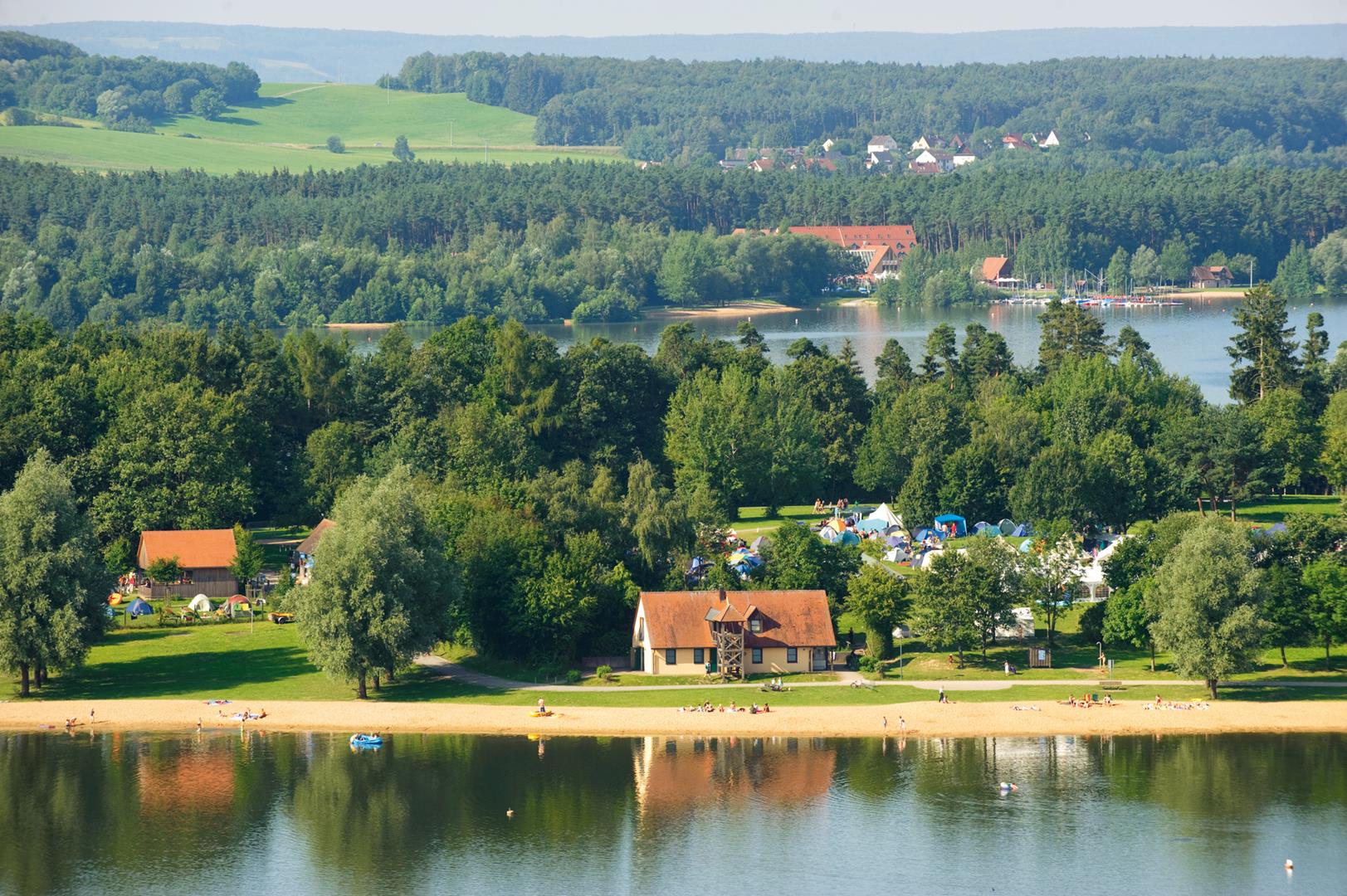
12
يوليوIn: Geographical Statistical-Topographical Lexicon of Franconia
The character reserves of the Igelsbachsee reservoir, the peninsula within the Kleiner Brombachsee, the Brombachmoor and the Sägmühle are also located on the Brombachsee. The water degree of the Kleiner Brombachsee, like that of the Igelsbachsee, which is fed by the second large tributary Igelsbach, is kept largely constant by a pre-dam. On the Eckersmühlen lock it is channeled from the upper water into the instantly neighboring Rothsee, a reservoir created within the Kleine Roth valley. The Danube-Foremost switch system includes a complete of three lakes, including the Altmühlsee with a ring dam and two dams with Brombach and Rothsee, which embrace five dams as a consequence of their pre-dams, three hydroelectric energy plants at the dams and the Hilpoltstein lock, the canal routes to the Altmühlsee and from there to Brombachsee in addition to 27 other weirs on watercourses, some of which have been expanded to accommodate higher water circulate. This water then flows by way of a energy plant with 3 megawatts of electrical output at the Hilpoltstein lock with a head of 24.67 m. Since then, it has hosted a large number of Max Planck younger research teams and Alexander von Humboldt scholarship holders and, with the Faculty of Engineering, has been concerned in the two Excellence Initiative institutions that have been arrange at the University of Erlangen-Nuremberg in 2004.

Since 1994, water has been pumped from the Danube to the highest of the canal using pumps at the five locks on the southern ramp of the canal, from where it flows downwards over one other barrage into the Rothsee, the place the water is stored and, if necessary, in two different ways can also be delivered to the Regnitz. This is finished through a energy plant with a design output of 630 kilowatts (two via-move turbines with 315 kW every). 9.Zero m³/s can bypass the facility plant. In addition, floodwater in the upper Altmühl close to Ornbau is diverted into the switch system, which is meant to protect the Altmühltal under from flooding. When the Altmühl floods, excess water is channeled into the 5 km long Altmühl feeder near Ornbau to the Altmühlsee. Without the addition, the Regnitz can carry less than 10 m³/s of water at the Hüttendorf gauge in dry circumstances. With the Danube-Main switch, the water management authorities of the Free State of Bavaria divert water from the Danube river system into the Regnitz and Principal system in Franconia, which is threatened by momentary drought. There are also elements and services of the primary-Danube Canal that simultaneously serve other purposes: the canal itself between the connection to the Danube and the outlet into the Schwarzach, along with the inlet and outlet structures, as effectively as the pumping stations on the south ramp.
Whereas within the name Fundamental-Danube Canal the rivers inside the word correspond to the geographical association on the north-going through map, the term Danube-Essential transition reflects the circulate course of the water pumped from the Danube and flowing in the path of the principle. Its longest tributaries also move into this decrease part of its course, particularly the Schwarzach, previously also the Sulz, which has now been cut up due to the use of its valley and water for the primary-Danube Canal and its predecessor, then the one which, to a sure extent, represents it in the present day Canal itself and at last the Weiße Laber, all left-hand tributaries, whose great size and catchment space displays the way more distant location of the left watershed to the Rhenish system in this area. This water will improve the water high quality of Regnitz and Essential, which has been affected by intensive industrial and agricultural use. This introduced with it significant restrictions on use and ecological dangers, e.g. B. for the elimination of financial institution filtrate for irrigation of the Middle Franconian vegetable growing area, which solely became potential with the transfer, or through the usage of cooling water, and so forth. In the long term, a median annual transfer by means of the complete system of one hundred fifty million m³ of water is predicted, 5/6 of that via the principle-Danube Canal. When water is low, water will even be released from the lake back into the Altmühl, however as a rule it is initially transported from the Altmühlsee by means of the 8.7 km long Altmühl overpass, which crosses underneath the watershed in a tunnel over a distance of 2.7 km the Kleiner Brombachsee and from there into the instantly adjacent Großer Brombachsee.
Between 1995 and 2013, an average of 27.9 million had been sold this way annually. M³ of water over the water sheath was transferred, after the top of the installation, a mean of 26.5 million m³ have been transferred in 1999-2013 and 28.7 million m³ from the Brombachsee were given, whereby eleven million m³ of extra inflow from the catchment area of the Brombach becomes. In the years 1994-2013, an average of 97 million m³ of water were transferred to the Rothsee yearly, the pure inflow of the small pink is approx. The character reserve runs about 2.6 kilometers alongside the south bank of the Großer Brombachsee, from the dam of the small Brombachsee To Ramsberg. The wasteland is situated in the Franconian Seenland, 1.5 kilometers southwest of Pleinfeld on a forest edge. South financial institution of the great Brombachsee, about three kilometers northeast of Langlau and 2.2 kilometers northwest of Ramsberg near the Weißenberg. Partly paid parking amenities are positioned at the sports boat port in Langlau and in Ramsberg. The pouch mill was situated on the Brombach northeast of the Pfofeld district of Langlau and south of Absberg in the area of today's Kleiner Brombachsee.



